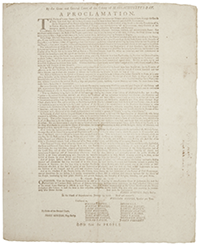of the most extensive private reference collections that I have ever seen. Lining every nook and cranny of this large floor (which also contains desks for some of the bibliographic staff) are Sotheby’s catalogues going back to the nineteenth century, the last ten years of Christie’s catalogues (the rest are elsewhere, but rest assured they have them), old dealer’s catalogues, every sort of bibliography, specialized and general, that you can imagine, German and French auction records (they use the CD-Rom version of American Book Prices Current so as to save valuable shelf space), the standard Americana references (Sabin, Church, etc.), European Americana references, biographical dictionaries, the British Museum catalogue, and lots of references in foreign languages, some ancient, some modern, covering just about every region throughout Europe and just about every time period. As a librarian I am astounded. I can’t even guess at the number of reference works contained on this floor, but together they comprise a stronger bibliographic reference collection than just about any mid-sized academic library would have to offer.
Over my ogling of their reference materials, I learn that H.P. Kraus, Inc. does do a steady business in selling reference works, although of course they only offer up duplicate copies for sale. I also learn that Mr. Kraus had assembled a substantial reference library in Austria and that he had to totally rebuild it once he arrived in America. He certainly did a fine job.
We progress by elevator to the third floor, which is totally unlit when we enter, giving it an eerie effect. When the light switch is dramatically flicked I see what looks like the remains of a very proper New York Park Avenue apartment: a long wooden dining table covered with a red tablecloth, some chairs, a chandelier. Mr. Lipton informs me that “this is where Mr. and Mrs. Kraus lived during the week,” but that it is now used mostly for openings and parties. As with the other floors there is a back room. This back room yields, amazingly, still more reference material. There are book dealing memoirs, ancient encyclopedias useful for ironing out or understanding eighteenth century doctrinal disputes, Judaica encyclopedias – the list goes on and on. I have long since stopped keeping track of reference titles and simply gasp at the abundance and specificity of this material.
I am informed that the fourth and fifth floors contain mostly more reference matter. At this point I am nearly overwhelmed, until Mr. Lipton pops the question to me in the elevator as we head back to the ground floor: “Would you like to see the vault?”
Would I like to see the vault? Is the Pope Catholic? I would like nothing more, but hadn’t dreamed of asking even though I noticed it facing us, taunting me, during our entire conversation downstairs. Quickly we disembark on the ground floor and head for a rear corner of the back room, where there sits one of those ceiling to floor very imposing looking metal bank vaults. I feel as if I’m at the door of Fort Knox. I just stare, thinking that Mr. Lipton meant literally “Would you like to see the vault” (i.e., from the outside), until Mr. Lipton says to me: “Wouldn’t you like to come in?” Of course I would, but I
formerly the
Americana Exchange
Americana Exchange
US / Canada Toll Free
(877)-323-RARE [7273]
(877)-323-RARE [7273]
Rare Book Monthly
-
Heritage Auctions
Rare Books Signature Auction
December 15, 2025Heritage, Dec. 15: John Donne. Poems, By J. D. With Elegies on the Author's Death. London: M[iles]. F[lesher]. for John Marriot, 1633.Heritage, Dec. 15: Edgar Rice Burroughs. Tarzan of the Apes.Heritage, Dec. 15: F. Scott Fitzgerald. Tender is the Night. A Romance.Heritage, Dec. 15: Bram Stoker. Dracula. Westminster: Archibald Constable & Co., 1897.Heritage, Dec. 15: Jerry Thomas. How to Mix Drinks, or the Bon-Vivant's Companion, Containing Clear and Reliable Directions for Mixing All the Beverages Used in the United States… -
Rare Book Hub is now mobile-friendly! -
Bonhams, Dec. 8-18: Autograph Letter Signed ("Martinus Luther") to His Friend the Theologian Gerhard Wiskamp ("Gerardo Xantho Lampadario"). $100,000 - $150,000.Bonhams, Dec. 8-18: An Exceptionally Fine Copy of Austenís Emma: A Novel in Three Volumes. $40,000 - $60,000.Bonhams, Dec. 8-18: Presentation Copy of Ernest Hemmingwayís A Farewell to Arms for Edward Titus of the Black Mankin Press. $30,000 - $50,000.Bonhams, Dec. 8-18: Autograph Manuscript Signed Integrally for "The Songs of Pooh," by Alan Alexander. $30,000 - $50,000.Bonhams, Dec. 8-18: Autograph Manuscript of "Three Fragments from Gˆtterd‰mmerung" by Richard Wagner. $30,000 - $50,000.Bonhams, Dec. 8-18: Original Preliminary Artwork, for the First Edition of Snow Crash. $20,000 - $30,000.Bonhams, Dec. 8-18: Autograph Letter Signed ("T.R. Malthus") to Economist Nassau Senior on Wealth, Labor and Adam Smith. $20,000 - $30,000.Bonhams, Dec. 8-18: History of the Peloponnesian War by Thucydides Finely Bound by Michael Wilcox. $20,000 - $30,000.Bonhams, Dec. 8-18: First Edition of Lewis and Clark: Travels to the Source of the Missouri River and Across the American Continent to the Pacific Ocean. $8,000 - $12,000.Bonhams, Dec. 8-18: Original Artwork for the First Edition of Neal Stephenson's Groundbreaking Novel Snow Crash. $100,000 - $150,000.Bonhams, Dec. 8-18: A Complete Set Signed Deluxe Editions of King's The Dark Tower Series by Stephen King. $8,000 - $12,000.Bonhams, Dec. 8-18: Autograph Letter Signed ("John Adams") to James Le Ray de Chaumont During the Crucial Years of the Revolutionary War. $8,000 - $12,000.
-
Sotheby’s
Book Week
December 9-17, 2025Sotheby’s, Dec. 17: Francesco Colonna. Hypnerotomachie, Paris, 1546, Parisian calf by Wotton Binder C for Marcus Fugger. €200,000 to €300,000.Sotheby’s, Dec. 17: Nausea. De principiis dialectices Gorgias, and other works, Venice, 1523, morocco gilt for Cardinal Campeggio. €3,000 to €4,000.Sotheby’s, Dec. 17: Billon. Le fort inexpugnable de l'honneur, Paris, 1555, Parisian calf gilt for Peter Ernst, Graf von Mansfeld. €120,000 to €180,000.Sotheby’s
Book Week
December 9-17, 2025Sotheby’s, Dec. 16: Salinger, J.D. The Graham Family archive, including autographed letters, an inscribed Catcher, a rare studio photograph of the author, and more. $120,000 to $180,000.Sotheby’s, Dec. 16: [Austen, Jane]. A handsome first edition of Sense and Sensibility, the author's first novel. $60,000 to $80,000.Sotheby’s, Dec. 16: Massachusetts General Court. A powerful precursor to the Declaration of Independence: "every Act of Government … without the Consent of the People, is … Tyranny." $40,000 to $60,000.



![<b>Heritage, Dec. 15:</b> John Donne. <i>Poems, By J. D. With Elegies on the Author's Death.</i> London: M[iles]. F[lesher]. for John Marriot, 1633. <b>Heritage, Dec. 15:</b> John Donne. <i>Poems, By J. D. With Elegies on the Author's Death.</i> London: M[iles]. F[lesher]. for John Marriot, 1633.](https://ae-files.s3.amazonaws.com/AdvertisementPhotos/8caddaea-4c1f-47a7-9455-62f53af36e3f.jpg)
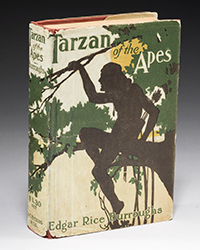
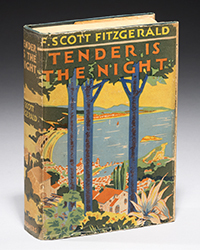
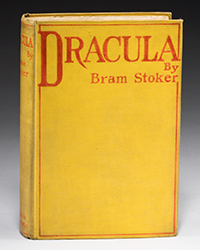










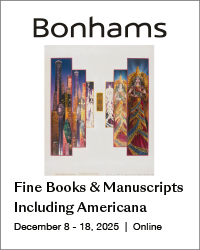

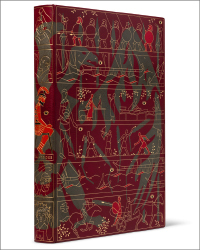

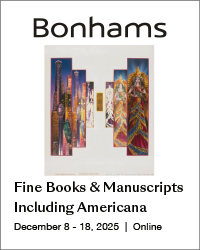
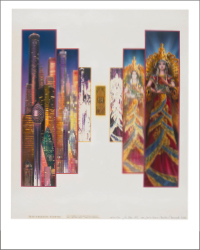
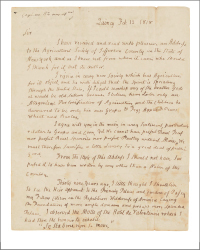

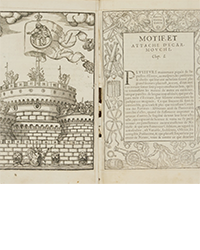
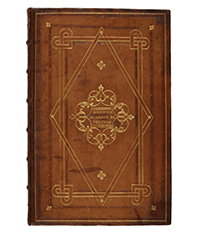
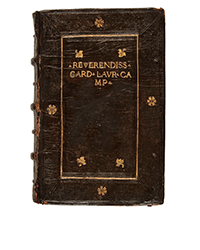
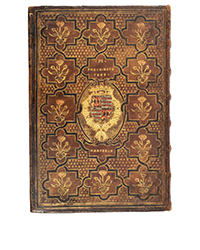

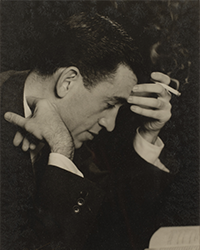
![<b>Sotheby’s, Dec. 16:</b> [Austen, Jane]. A handsome first edition of <i>Sense and Sensibility,</i> the author's first novel. $60,000 to $80,000. <b>Sotheby’s, Dec. 16:</b> [Austen, Jane]. A handsome first edition of <i>Sense and Sensibility,</i> the author's first novel. $60,000 to $80,000.](https://ae-files.s3.amazonaws.com/AdvertisementPhotos/9a74d9ff-42dd-46a1-8bb2-b636c4cec796.png)
